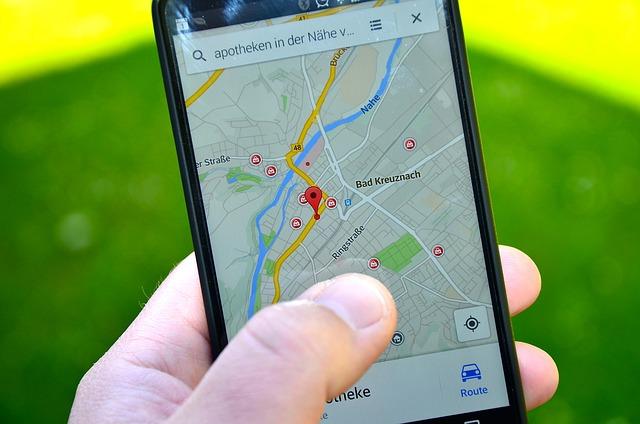In the world of filmmaking, where every frame is a canvas and every scene a carefully curated masterpiece, the role of location scouting emerges as an unsung hero. It is the delicate art of finding that perfect backdrop, the one that breathes life into a story and infuses authenticity into its narrative. From bustling city streets to serene rural landscapes, the right location can transform a script’s vision into a tangible reality, grounding characters and plots in a believable world. This exploration delves into the crucial process of location scouting, unveiling how it shapes the soul of cinema by crafting environments that resonate with audiences long after the credits roll. Location Scouting“>
Location Scouting“>
Discovering Realism: The Art of Location Scouting
Creating a believable world on screen demands meticulous attention to detail, and the foundation of this authenticity often lies in the art of location scouting. This essential process involves more than just finding a backdrop; it’s about discovering spaces that embody the film’s narrative and emotional undertones. A well-chosen location can enhance storytelling by providing a sense of place that resonates with the audience, adding layers of depth and realism.
- Atmosphere: Locations set the mood and tone, influencing how the audience perceives the story.
- Authenticity: Real-world settings offer a tangible authenticity that studio sets can struggle to replicate.
- Character Integration: Locations can reflect character traits, subtly enhancing character development.
- Cost Efficiency: Natural environments can often reduce the need for expensive set constructions.
By thoughtfully selecting locations, filmmakers can transport viewers into the heart of the narrative, ensuring that each scene feels as genuine as the story itself.
Balancing Authenticity and Creativity in Film Environments
Crafting an immersive cinematic experience hinges on the delicate dance between authenticity and creativity within film environments. The art of location scouting plays a pivotal role in this process, serving as the bridge that connects the director’s vision with the tangible world. Authenticity grounds the narrative, offering viewers a sense of reality that enhances emotional engagement. However, creativity breathes life into these settings, transforming ordinary locations into extraordinary backdrops.
To achieve this balance, location scouts often consider several key factors:
- Historical Accuracy: Ensuring that the setting aligns with the period and cultural nuances of the story.
- Aesthetic Appeal: Selecting sites that visually complement the film’s thematic elements.
- Logistical Feasibility: Assessing accessibility and practicality for filming.
- Atmospheric Essence: Capturing the mood and tone that resonate with the narrative arc.
By meticulously blending these elements, filmmakers can create environments that not only support the storyline but also captivate the audience, offering a seamless fusion of reality and imagination.

Navigating Challenges: Ensuring Seamless Integration of Locations
When crafting a film, the seamless integration of locations is crucial to maintaining authenticity and immersion. However, this process is not without its challenges. Logistical issues often arise, such as coordinating schedules, managing transportation, and ensuring the availability of essential facilities. To tackle these, filmmakers can adopt a proactive approach by conducting thorough site visits and establishing clear communication channels with local authorities and vendors.
Moreover, the technical aspects of a location can present hurdles. Variations in lighting, sound interference, and weather conditions must be meticulously accounted for. Here are some strategies to ensure smooth integration:
- Pre-visualization: Utilize digital tools to simulate potential setups and anticipate challenges.
- Flexible Planning: Develop contingency plans to adapt to unforeseen circumstances.
- Local Expertise: Collaborate with local professionals who understand the nuances of the area.
By addressing these challenges head-on, filmmakers can ensure that their chosen locations enhance the narrative rather than detract from it.

Expert Tips for Successful Location Scouting in Filmmaking
For filmmakers, the process of selecting the perfect backdrop is as crucial as choosing the right cast. Here are some expert tips to ensure your location scouting is both effective and efficient:
- Research Thoroughly: Before stepping foot on any site, dive deep into research. Utilize online resources, local contacts, and social media to gather insights about potential locations.
- Visit at Different Times: A location can dramatically change throughout the day. Visit your potential spots at various times to understand lighting, noise levels, and crowd dynamics.
- Consider Accessibility: Evaluate how easy it is to access the location for both crew and equipment. Difficult access can lead to logistical challenges that may disrupt the shooting schedule.
- Assess the Environment: Pay attention to the surrounding area. Natural elements like weather, terrain, and ambient noise can impact filming, so plan accordingly.
- Obtain Necessary Permissions: Ensure all legal permits and permissions are secured well in advance. This avoids last-minute complications and ensures a smooth shooting process.
By integrating these strategies, filmmakers can create more authentic and immersive environments that elevate the storytelling experience.

